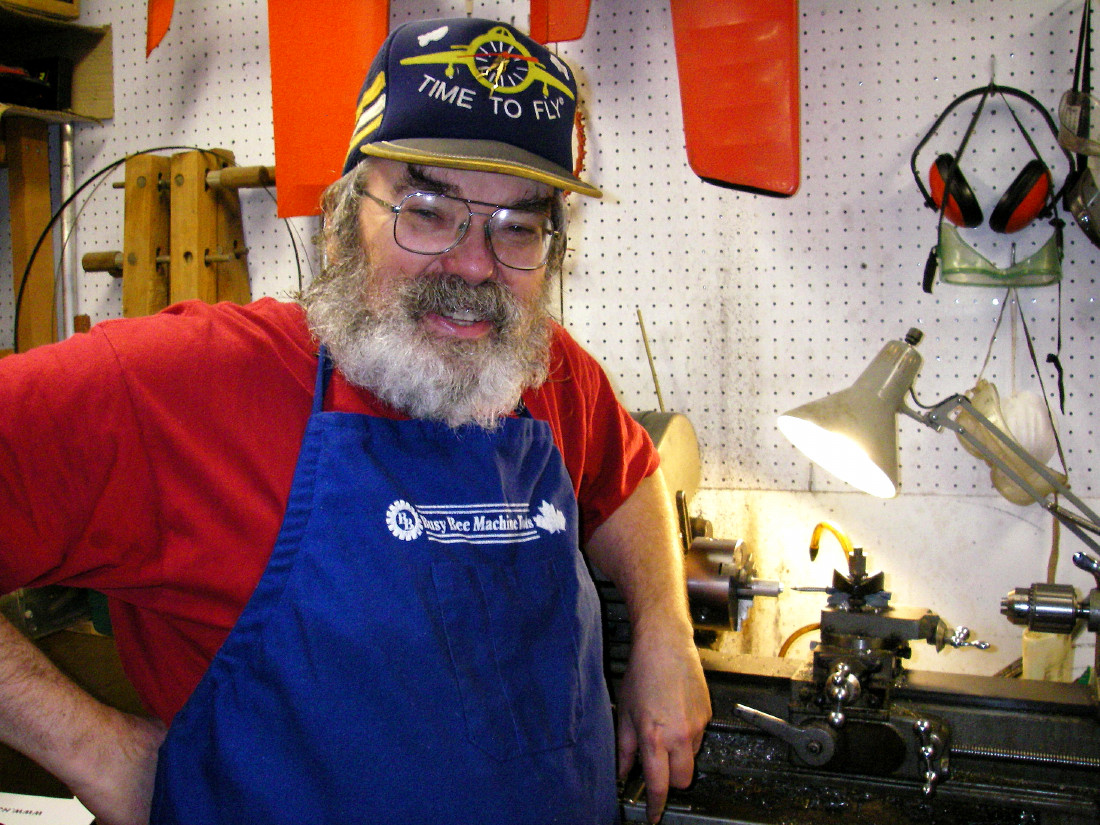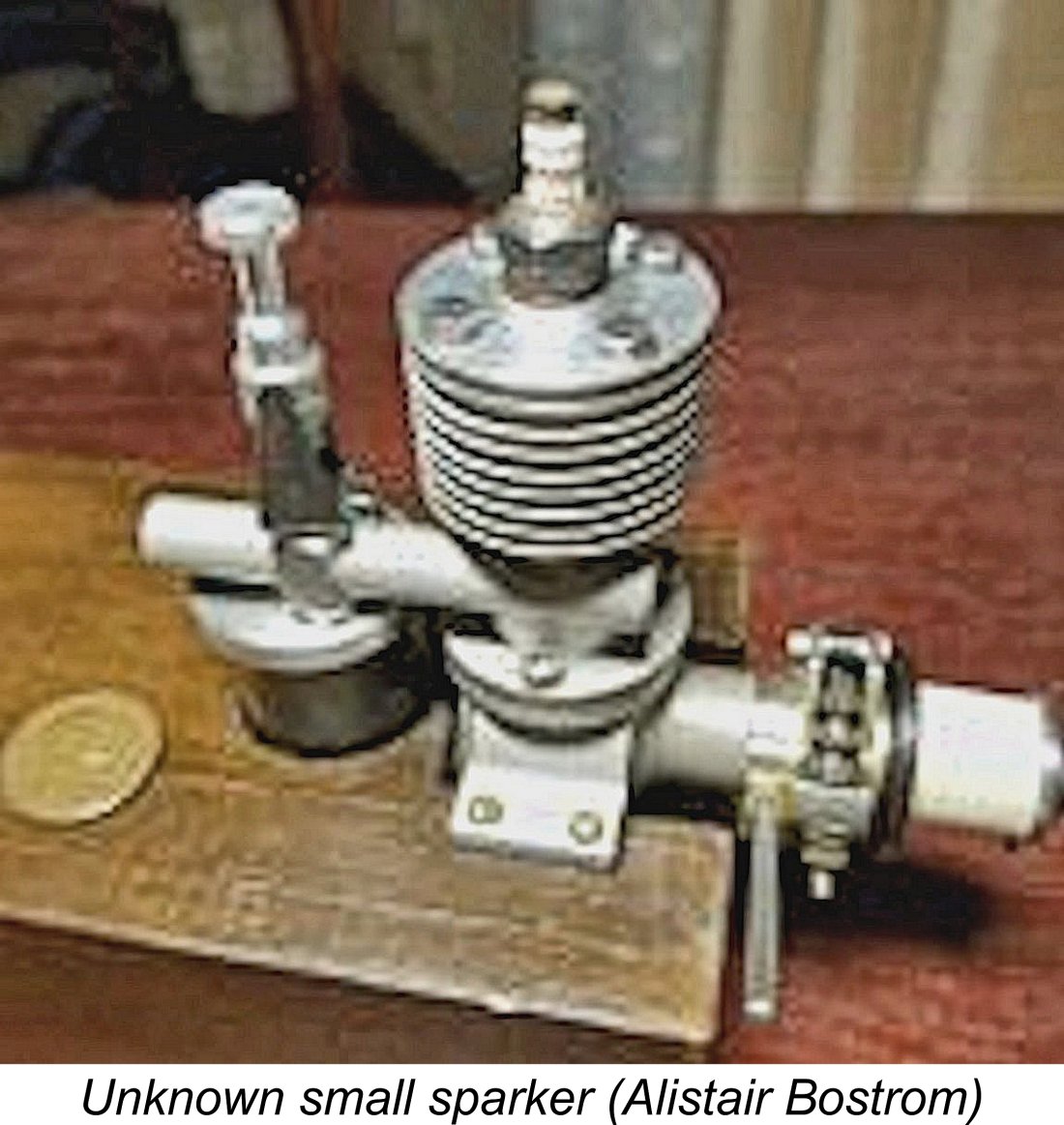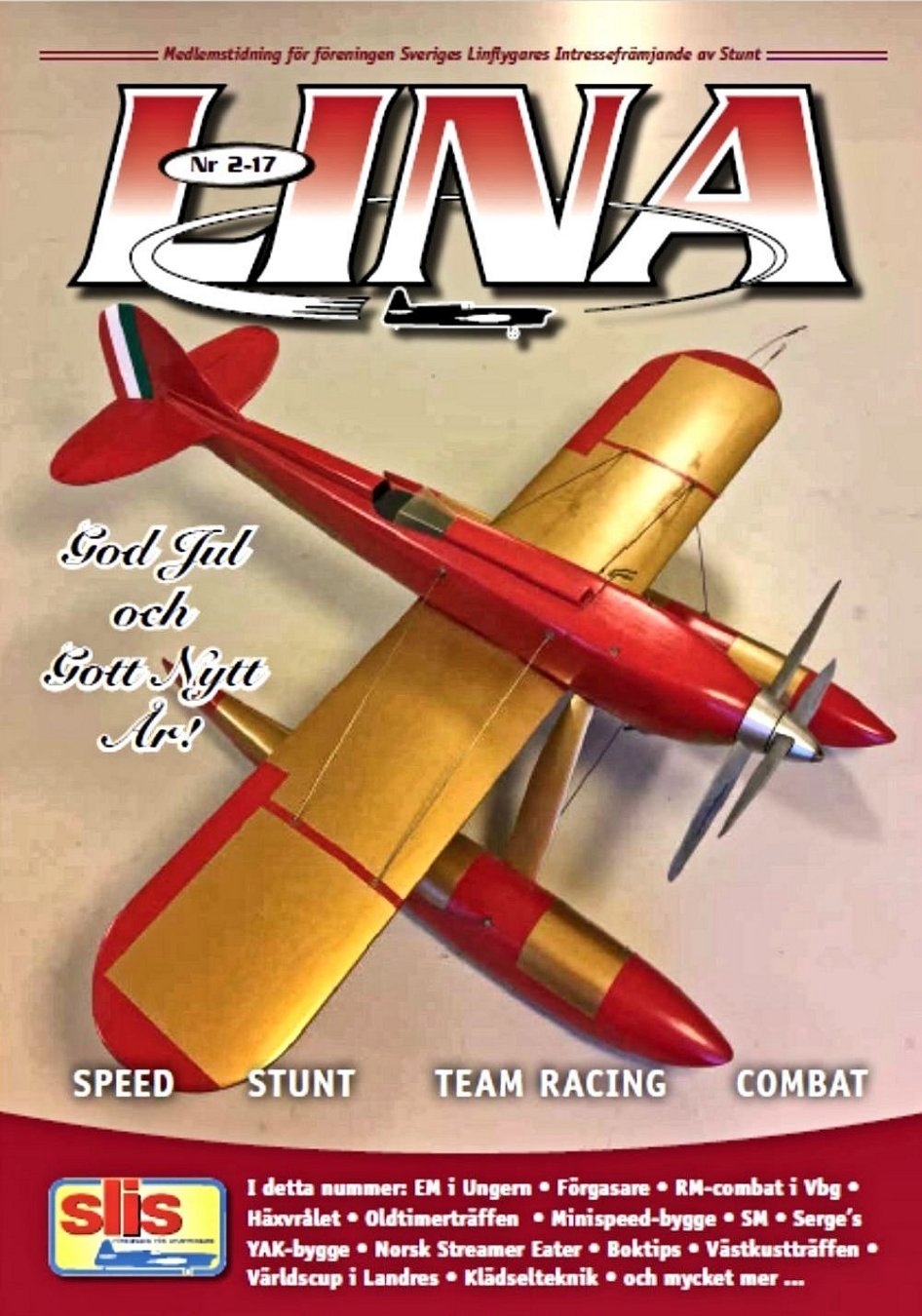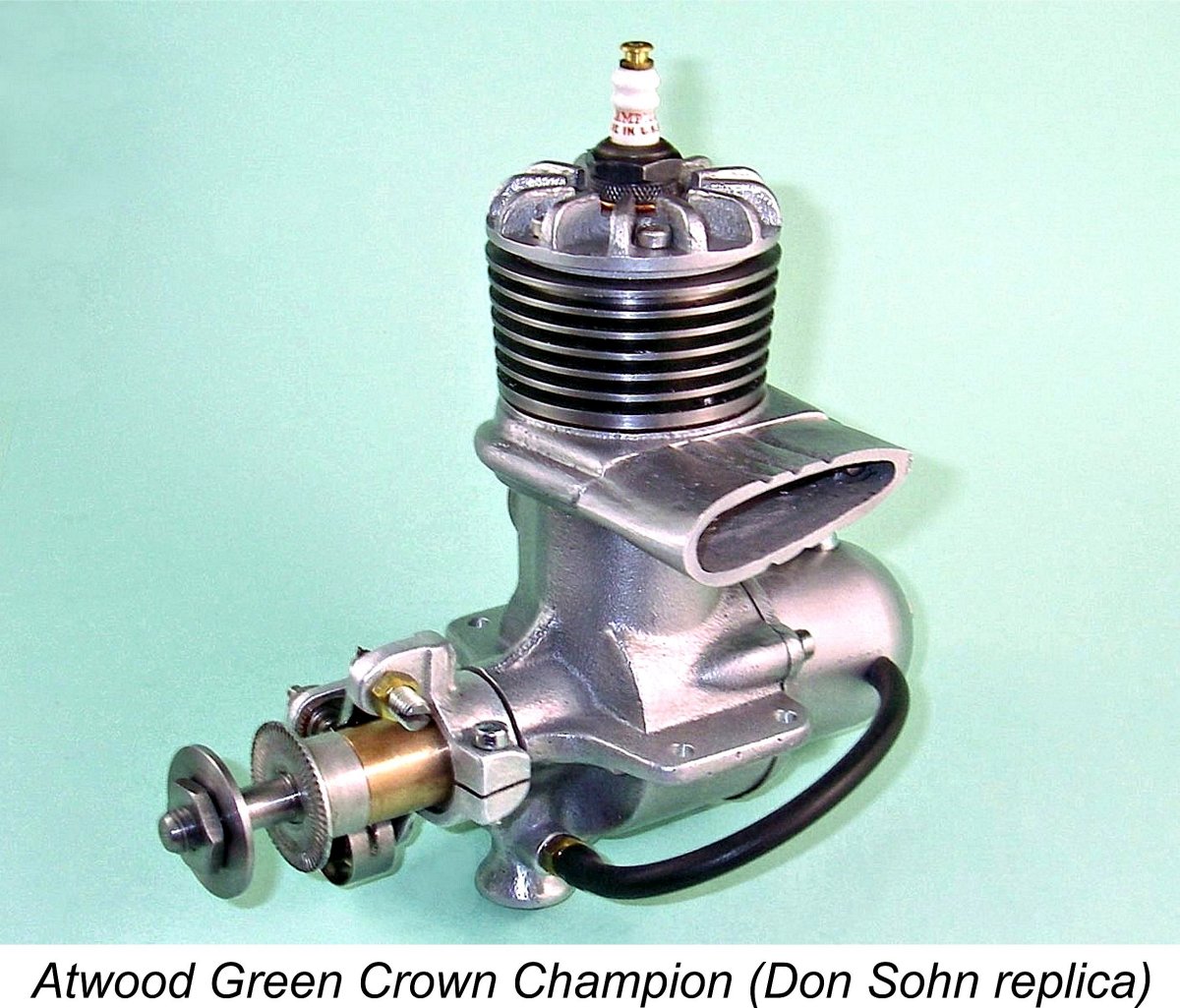
|
|
From the Editor - February 1st , 2018
I'm glad to report that despite the distractions of the festive season, reader engagement with this web-site remained strong during December 2017, the last month for which complete data are available at the time of writing. The number of hits in December was a healthy 531,233, a little down on the record high figure of 558,817 established in November 2017, but still reflecting excellent site visibility. After all, people have concerns other than model engines durng December! Despite the modest drop in the number of hits, the number of resulting visits actually increased quite significantly. That after all is the most revealing statistic, since it reflects actual use of the site. December saw an increase in the number of visits from 14,022 in November to 15,144 in December. This finally erases the previous record of 14,268 set in March 2017, and by a handsome margin at that! As one would Some of you newer readers may be wondering why I pay such close attention to the monthly visitation data for this site, to the extent of publishing the information with every Editorial. It's really very simple - these figures allow me to monitor the level of interest in what I'm doing here. They also allow my readers to remain abreast of the general level of ongoing interest in classic and collectible model engines. No sense preaching to a non-existent congregation! In a very real sense, those numbers are my incentive for spending the very considerable time (and money) required to keep this up. If the numbers eventually fall to marginal levels, that'll be the time to stop. Until then - onwards!! Despite my repeated admonitions not to do so, people are continuing to try to register on this website. As I've already stated repeatedly, this has no effect whatsoever - it's simply an artefact left over from the generic platform's intended use as an on-line sales site. Since this is not a sales site, the registration feature is redundant and I make no use of it whatsoever. Please don't bother - it simply creates unnecessary cyber-clutter! This message will clearly have to remain a regular feature of these Editorials........... One facility which is available on this site but has not been getting much use lately is the Wotizit page, where you can post images and information about engines which defy identification, in the hope that some other reader may be able to help. I heard recently from a reader who said that he couldn't figure out how to add material to it. I thought that it was well explained in the header for the page, but just in case I'll repeat that information here. You can submit comments and requests through a dedicated webmail address which I’ve established for this specific purpose – please respect that! You may use that webmail address to submit your suggestions for additions to the list of those engines already included. Equally, if you can identify an engine which already appears there, please let me know through the above email link. Alternatively, you can use the blog Speaking of which, reader Alistair Bostrom submiited a candidate engine through the blog site. It's a neat and very well-made little sideport spark ignition engine which had defied all of Alistair's effort to identify it. He suspected that it might be a repro of a 1930's model, or at least someone's latter-day rendition of a typical design of that era. It bears no marks of identification other than the number 38 stamped on the right-hand lug. Fortunately, even before I added it to the Wotizit page, reader David Hill came up with the I/D through the blog site. Alistair's suspicions were correct - it's a Simplex Hornet .19, made in around 1981 by John Morrill. A very nice engine indeed! Many thanks to David for his help on this. Also, thanks to Alistair for his submission. Over the past month, I've once again had the good fortune to hear from an amazing number of valued contacts from around the world, including Andrew Boddington, Maris Dislers, David Burke, Derek Butler, Paul Rossiter, Alistair Bostrom, Alan Strutt, Luis Petersen, Peter Valicek, Bill Schmidt, Larry Davidson, Ingemar Larsson, Hugh Blowers, Vivek Sharma, Mike Conner, Dave Zwolak, Tom Coletta, David Hill, Johnny Shannon, Don Sohn, Tim Dannels, Ken Croft, Peter Rathke and Jim Dunkin. Sincere apologies to anyone whom I may have inadvertently missed in the crowd! David Burke and Dave Zwolak between them made me aware of a very interesting on-line resource which will be of interest to anyone who enjoys reading about full-size aviation history. This is the Journal of Aeronautical History which is published under the auspices of the Royal Aeronautical Society in Britain. Many fascinating articles there on a wide range of historical aviation subjects - well worth a look!
The contacts with Bill Schmidt and Larry Davidson came about due to my getting started on a detailed article about the present-day operation of spark ignition engines. As part of this project, I formed the goal of creating my own fully functional spark ignition test stand with its own built-in ignition support system - no more testing old sparkers on glow-plug ignition for me! Bill is the inventor of the "Schmidt trigger" which uses solid state circuitry to relieve the stress on the always-problematic contact breaker, while Larry sells a refined version of Bill's system along with spark plugs, coils and wiring. With Larry's help, I'm now in the process of assembling the components necessary to create and test a reliable and fully up-to-date system. Complete details will appear in the forthcoming article, which I hope will encourage more folks to give spark ignition operation a try. Meanwhile, have a look at Larry's catalogue by checking out this location. The blog site has continued to generate a certain amount of traffic - thanks for that. A fair number of readers seem to have finally figured out the new anti-spam protocol, which is so far working to perfection - not a single spam message since it took effect! Even the new image uploading feature has seen some use, so it's obviously fully functional as well. Use it - that's what it's there for!! A number of readers have noticed that the range of topics covered on this website is pretty random, with little or no attempt at strict categorization - I seem to be all over the map! This being the case, I'm often asked how I go about selecting the topics covered. The answer may be a bit disappointing for some folks - as often as not, it's a matter of pure chance! Generally speaking, I don't go looking for subjects about which to write, because I have no need to do so - at the present time of writing, I have over a dozen artcles either completed or nearly so and just waiting for their turn to be published. The material for the next year is already there for the most part!
That having been said, for the most part I don't go chasing my subjects at all - I simply keep my ear to the ground just in case something presents itself that attracts my interest. It may be the unexpected opportunity to acquire or at least borrow an engine of significant historical interest, or it may be identifying a hitherto untapped source of information on a poorly-documented topic. There's no planning invloved in such cases. When I become aware of the opportunity to write with authority about a subject which I feel may be of wider interest, I just roll up my sleeves and get on with it! In this way, most of my subjects appear here without prior planning simply by virtue of having presented themselves to me rather than me chasing after them! This month's feature article is very much a case in point, since it covers a topic about which I never expected to be in a position to write! Its preparation was triggered quite out of the blue by an unexpected and indeed quite unforeseen opportunity to acquire a fine example of an engine which I had previously had no reasonable expectation of ever being able to examine and analyse. This acquisition put me in a position, amounting to an obligation in my book, to share the information to which I was so fortuitously made party.
Now I'll be the first to admit that Canada is definitely not the first country that comes to mind when the subject of commercial model engine manufacturing comes up! In large part this is doubtless due to the combination of two factors – one, Canada's huge geographic area which created a very wide spread among a relatively small population and hence a highly fragmented domestic marketplace; and two, the presence of a ready source of competitively-priced engines which were mass-produced to a high standard immediately south of the border in the USA.
But that's not all - in addition, there's yet another bonus article from my valued Aussie mate Maris Dislers, who is lucky enough to own a very rare example of one of the fine diesels made in New Zealand by Vern and Ira Pepperell. These engines were uniquely identified by their bore size rather than more conventionally by their displacements. Maris has been kind enough to put his Half-Inch example through its paces on the test bench to produce what must surely be the first-ever published test of one of these units. He's also taken an overview look at the range of activities in which the Pepperells were engaged during the 1940's and early 1950's. Read all about it in Maris's fine article on the Pepperell Seven-Sixteenths and Half-Inch engines!
While drawing upon a number of previously-published biographies of Bill Atwood, I've taken this opportunity to correct a number of inconsistencies which have worked their way into Bill Atwood's "legend" over the years, also adding some new information which I've managed to dig up. I hope and believe that you'll find a great deal of interest in my recounting of Bill's story! I think that's it for now. I'll be back to you with another issue on or about March 1st, 2018. Meanwhile, best wishes for the year now underway, and may the heady aroma of diesel fumes or burning nitro assault your nostrils frequently............... ! Cheers, Adrian Duncan Coquitlam, British Columbia, Canada ___________________________________ Note regarding material to be found on this site - unless specifically otherwise noted, all images and text which appear on this site are my own work, and I hereby assert my right to be recognized as the originator of this material. For the record, this material is made freely available to all upon two firm conditions:
Adrian C. Duncan Coquitlam, BC, Canada
|
| |
 Wow, a whole month gone already in 2018! Where does the time go .....?!? In my case, it's been partially occupied with recovering from a rather nasty bacterial infection which left me with a fever and a few swollen glands for a while. Better now, thankfully.
Wow, a whole month gone already in 2018! Where does the time go .....?!? In my case, it's been partially occupied with recovering from a rather nasty bacterial infection which left me with a fever and a few swollen glands for a while. Better now, thankfully.

 Ingemar Larsson contacted me to advise that the latest edition (no. 2-2017) of his outstanding control-line magazine LINA is now out. As always, this is a treat for anyone who (like me!) retains an interest in control line flying. The all-color photography is first rate, as is the coverage of the topics presented. As usual, at least a third of the articles are in English, while the rest are easily rendered intelligible in any language through the use of currect OCR/translation technology.
Ingemar Larsson contacted me to advise that the latest edition (no. 2-2017) of his outstanding control-line magazine LINA is now out. As always, this is a treat for anyone who (like me!) retains an interest in control line flying. The all-color photography is first rate, as is the coverage of the topics presented. As usual, at least a third of the articles are in English, while the rest are easily rendered intelligible in any language through the use of currect OCR/translation technology.  On occasion, I pursue a specific subject purely on the basis of a number of requests to do so from my valued readership. The blog site is at everyone's service for the making of such suggestions. In addition, I periodically receive articles, often unsolicited, which have been prepared by others for inclusion on this website. My valued Aussie mate Maris Dislers has been my most prolific source of new material in this way - a sizeable number of his fine pieces now grace these pages, with yet another example of his work appearing this month (see below). I always welcome such submissions with open arms!
On occasion, I pursue a specific subject purely on the basis of a number of requests to do so from my valued readership. The blog site is at everyone's service for the making of such suggestions. In addition, I periodically receive articles, often unsolicited, which have been prepared by others for inclusion on this website. My valued Aussie mate Maris Dislers has been my most prolific source of new material in this way - a sizeable number of his fine pieces now grace these pages, with yet another example of his work appearing this month (see below). I always welcome such submissions with open arms!

